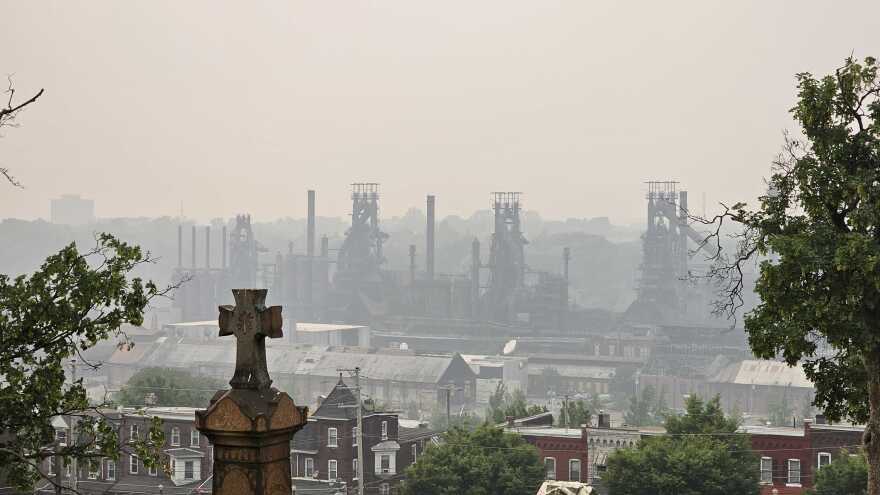ALLENTOWN, Pa. — The Lehigh Valley’s air quality is improving, but there are still challenges, according to the American Lung Association.
The Allentown-Bethlehem-Easton, PA-NJ metro area, which includes the Lehigh Valley and is the commonwealth’s third most populous region, received a "C" grade and ranked fourth worst in the mid-Atlantic for ozone pollution, according to the American Lung Association’s “State of the Air” report, released Wednesday.
The region’s air has improved slightly when considering ground-level ozone and particle pollution, according to the report. The metro area ranked 79th worst in the nation for both ozone pollution and short-term particle pollution — better than last year’s rankings.
Climate change is making air pollution more likely to form and more difficult to clean up, so there are actions we can and must take to improve air quality in Pennsylvania, including adopting zero-emission standards for passenger vehicles and heavy-duty trucks.Aimee VanCleave, director of advocacy for the American Lung Association
“In the 25 years that the American Lung Association has been doing our ‘State of the Air’ report, we have seen incredible improvement in the nation’s air quality,” said Aimee VanCleave, director of advocacy for the American Lung Association, in a news release. “Unfortunately, more than 131 million people still live in places with unhealthy levels of air pollution, and the Harrisburg metro area still has work to do.
“Climate change is making air pollution more likely to form and more difficult to clean up, so there are actions we can and must take to improve air quality in Pennsylvania, including adopting zero-emission standards for passenger vehicles and heavy-duty trucks. We are also calling on [the] EPA to set long-overdue stronger national limits on ozone pollution.”
Both the ozone and particle rankings were “based on the area’s worst county’s average number of unhealthy days,” according to the release.
For ozone, Northampton County had 1 unhealthy day per year — a C grade. Last year, the ranking was 65th worst, with 1.3 days per year, also a C grade. For particle pollution, the county had 1.3 days per year, another C grade. In last year's report, the ranking was 74th worst, with 1.5 days per year, also a C grade.
“For the year-round average level of particle pollution, the area’s worst county, Lehigh County, Pa., received a passing grade for pollution levels below the federal standard that was recently updated by the United States Environmental Protection Agency,” officials said in the release. “The Allentown-Bethlehem-Easton, PA-NJ metro area ranked 84th worst in the nation. This was better than the area's ranking in last year's report of 79th worst in the nation.”
Air quality monitoring in the Lehigh Valley
The Valley is no stranger to air quality issues, especially due to the proliferation of truck traffic and the ongoing, worsening effects of climate change.
Allentown last year was named the asthma capital of the U.S. by the Asthma and Allergy Foundation of America, climbing from third place the year prior. Recently, in March, Allentown was ranked 11th for the most challenging places to live with pollen allergies, according to the Allergy Capitals report, released by the Asthma and Allergy Foundation of America.
There are at least two air quality monitoring projects either underway or in the works across the region.
In August, officials from both Lehigh and Northampton counties launched Lehigh Valley Breathes, a year-long, $100,000 project aimed at monitoring air quality amid emissions from trucking and warehousing.
So far, 33 of the 40 PurpleAir monitors have been installed throughout the region, and preliminary data has shown fine particle pollution in the region is highest near warehouses and highways. The most recent update, released at the end of last month, emphasized how the project was designed to engage residents through citizen science.
Residents can view readings from the sensors on the Shiny App, the project’s online dashboard.
And, in mid-March, Allentown officials announced a partnership with the Center for Sustainable Innovation, or CSI, a public benefit corporation, and national nonprofit US Ignite to place air monitors outside a handful of city schools. It's expected to launch this summer.


